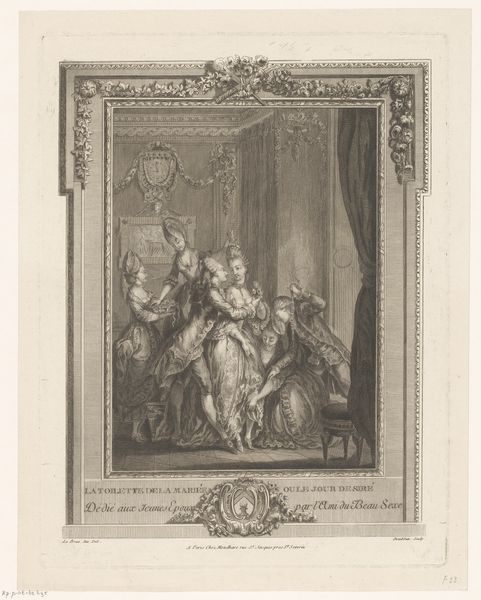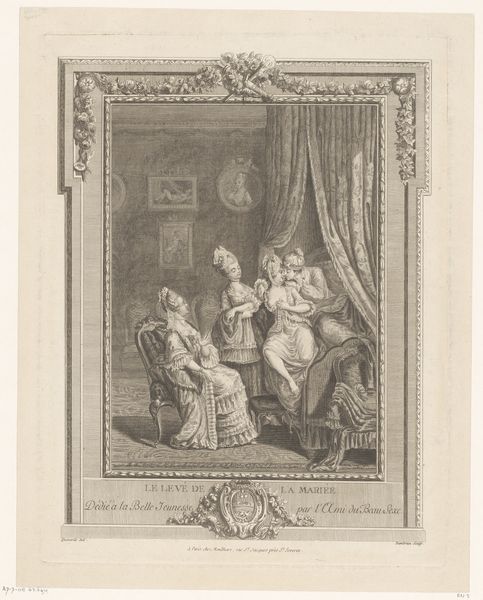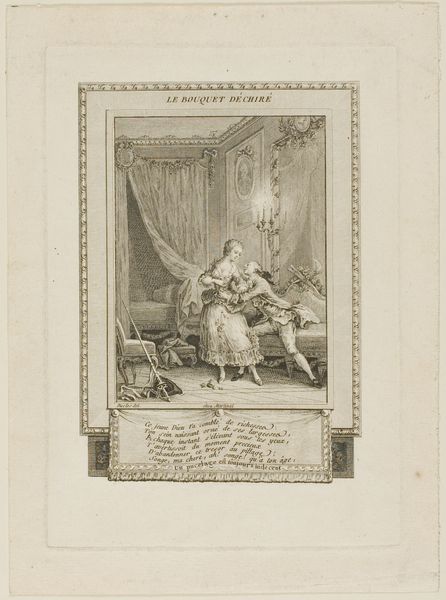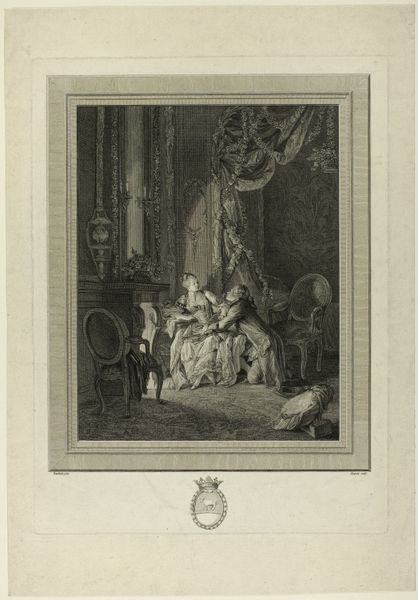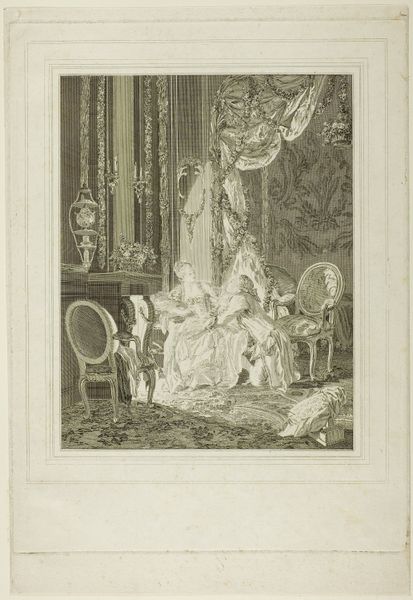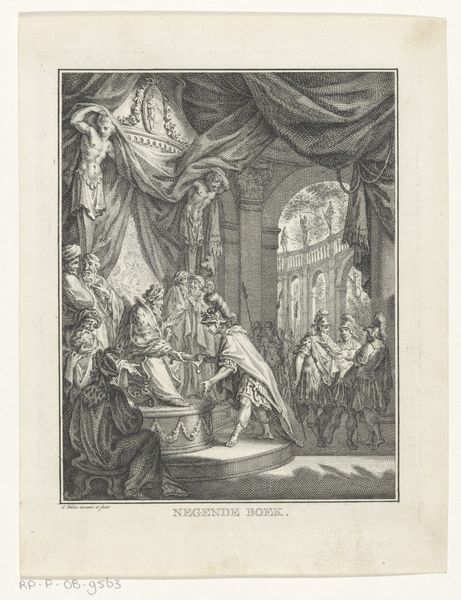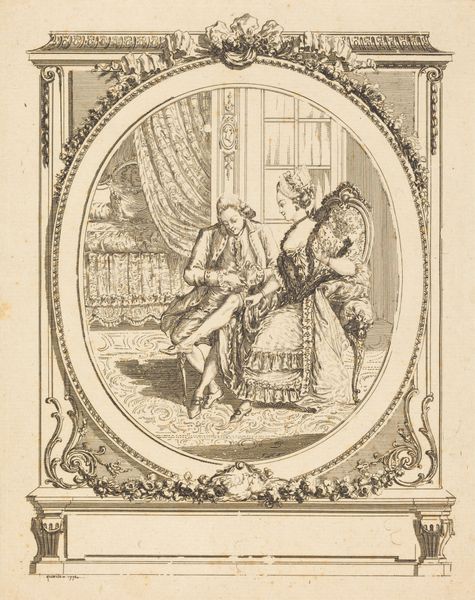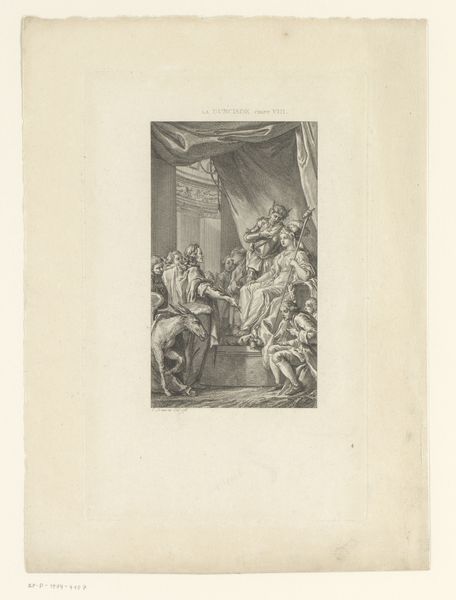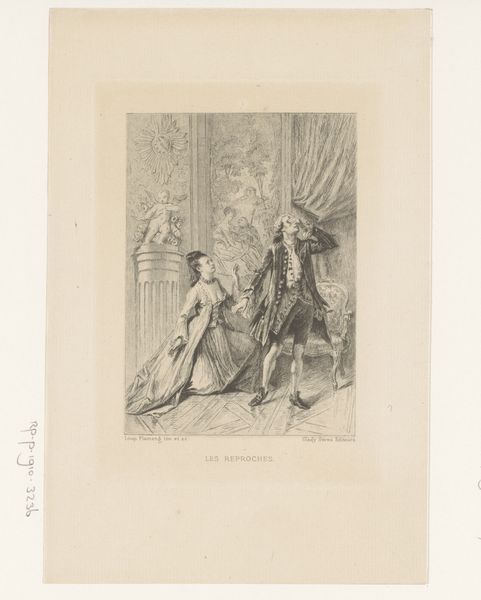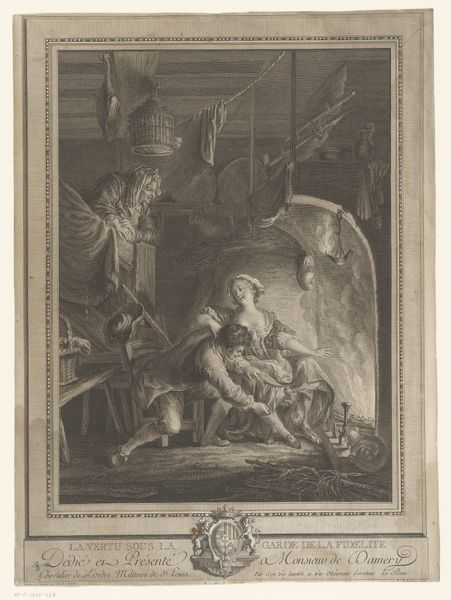
Dimensions: height 359 mm, width 275 mm
Copyright: Rijks Museum: Open Domain
Curator: This print, titled "Huwelijksnacht" or "Wedding Night", comes to us from Charles Emmanuel Patas, made sometime between 1748 and 1797. Editor: It's… delicate. Almost claustrophobic, with that heavy bed curtain dominating the upper left and all those figures clustered around the central woman. Curator: Absolutely. Let's unpack that. The composition, typical of the Rococo era, uses these enclosed interior scenes to comment on societal norms. Here, we're witnessing the *le coucher de la mariée*, a ritual where the bride is ceremoniously put to bed. Editor: So it's about performance. The layering of textures achieved through the engraving creates this visual density which seems to me to mimic the social pressures brought to bear on this young woman. Look at the way light catches the satin of her dress, contrasting with the shadows on the faces around her. It emphasizes the artificiality of the scene. Curator: Precisely. And while formally, the swirling lines and ornate details speak to Rococo aesthetics, thematically, it hints at a critique. This isn't a romantic image. The bride’s body language, supported by others, even seemingly held up against her will, speaks volumes about the lack of agency women faced. Editor: I’m particularly struck by the gaze of the figures surrounding the bride, some seem helpful and yet, even benevolent intention can manifest as a source of pressure. The limited grayscale enhances the gravity. Curator: Consider this in relation to Enlightenment ideals circulating at the time. The print raises questions about individual liberty, particularly for women. While outwardly celebrating marriage, it subtly exposes the constraints imposed upon the bride, becoming a visual critique of patriarchal expectations. Editor: And I appreciate how the frame that contains the picture repeats the flourish of shapes found within the image and seems as a result almost to cage the composition, underscoring its narrative about women's lack of choice. Curator: So, "Huwelijksnacht" reveals the intricate dance between public spectacle and private constraint. The scene acts almost as a stage upon which social power is enacted. Editor: Yes, this work shows us how art can simultaneously embody and question the values of its time, prompting reflections about social constructs that continue to inform discussions of gender and identity.
Comments
No comments
Be the first to comment and join the conversation on the ultimate creative platform.
